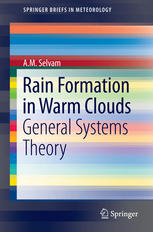

Most ebook files are in PDF format, so you can easily read them using various software such as Foxit Reader or directly on the Google Chrome browser.
Some ebook files are released by publishers in other formats such as .awz, .mobi, .epub, .fb2, etc. You may need to install specific software to read these formats on mobile/PC, such as Calibre.
Please read the tutorial at this link: https://ebookbell.com/faq
We offer FREE conversion to the popular formats you request; however, this may take some time. Therefore, right after payment, please email us, and we will try to provide the service as quickly as possible.
For some exceptional file formats or broken links (if any), please refrain from opening any disputes. Instead, email us first, and we will try to assist within a maximum of 6 hours.
EbookBell Team

0.0
0 reviewsThis book aims to promote the understanding of some of the basic mathematical and scientific issues in the subjects relating to climate dynamics, chaos and quantum mechanics. It is based on substantial research work in atmospheric science carried out over twenty years.
Atmospheric flows exhibit self similar fractal fluctuations, a signature of long-range correlations on all space-time scales. Realistic simulation and prediction of atmospheric flows requires the incorporation of the physics of observed fractal fluctuation characteristics in traditional meteorological theory. A general systems theory model for fractal space-time fluctuations in turbulent atmospheric flows is presented and applied to the formation of rain in warm clouds. This model gives scale-free universal governing equations for cloud growth processes. The model predicted cloud parameters are in agreement with reported observations, in particular, the cloud drop-size distribution. Rain formation can occur in warm clouds within 30 minutes as observed in practice under favourable conditions of moisture supply in the environment. Traditional cloud physical concepts for rain development requires over an hour for a full-sized raindrop to form.
The book provides background reading for postgraduate students of Meteorology, Atmospheric Sciences/Physics, Environmental Sciences, and scientists working in the field of the topic of the book as well as the multidisciplinary field of Nonlinear Dynamics and Chaos.